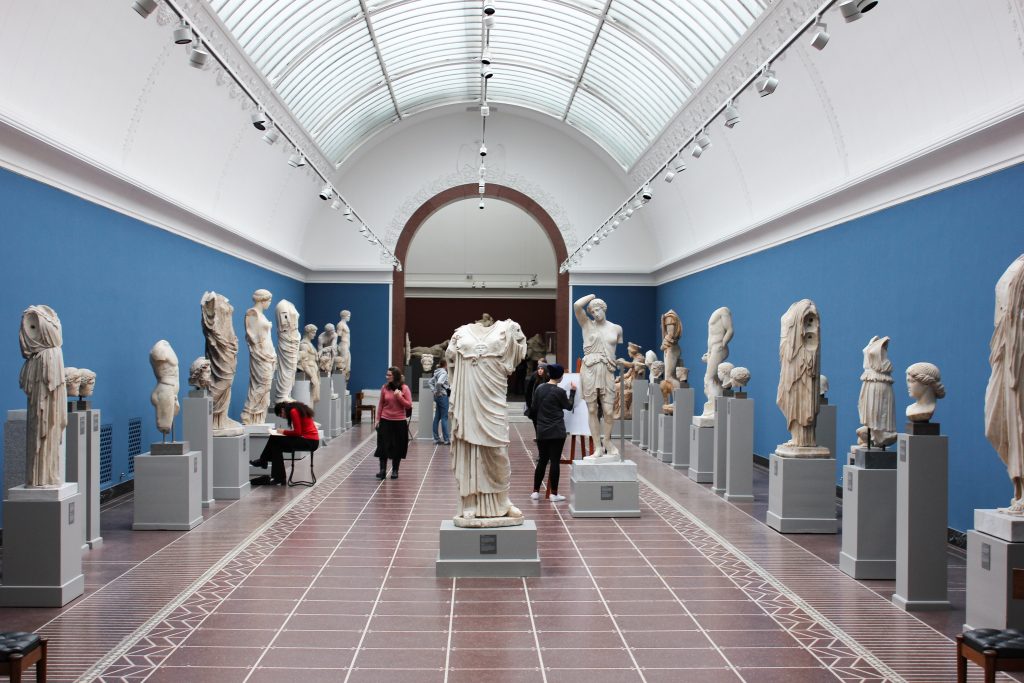
Throughout the course of COVID-19, ordinary activities had to be adapted to fit our new normal of social-distancing, mask-wearing and self-quarantining. Restaurants have adjusted to accommodate food delivery and pick-up, schools have switched to online learning and many jobs are now performed remotely.
Although they may not be considered an essential activity, museums have created new and innovative ways that enable people to experience, appreciate and learn about art and history from the safety of their own homes.
Virtual exhibitions and tours are becoming commonplace for museums. Google Arts & Culture has teamed up with over 2,500 museums and galleries around the world to create virtual tours and exhibits. As well, some museums have independently created their own online experiences.
As an avid museum attendee, I was excited to hear about this progress and wanted to go explore these virtual museums for myself to see how they compare to the in-person experience. Although I did not explore all 2,500 featured museums, I explored many famous museums across the globe that I have never had the opportunity to experience in-person, as well as museums within the U.S. that I previously visited.
Many of the museums have established virtual tours using Google’s street view, making it so you are looking at the art as if you were walking through the museum in-person. These views are interesting and give you the illusion of being present, but the actual up-close view of the artwork itself is not very clear.
Along with museums, Google Arts and Culture also features virtual tours and history of famous landmarks like the Eiffel Tower, the Palace of Versailles and The White House.
The museums also have high-quality photos of the artwork and historical pieces organized into collections separated by the type or time period and most of the photos come with descriptions of the artwork and background information on the artist or the subject itself. These photos are all very high quality and allow you a much closer look at the exhibits than the virtual tours.
Featured exhibits within the online museums give more in-depth information and connect the artwork or artifacts to the historical information surrounding the artist, region
The virtual tours and up-close looks of the artwork independently presented by the Louvre Museum in Paris was one of my favorites. It gave a unique and cultivated presentation with its high-quality visual and audio experience.
Some museums have gone even further and established interactive digital maps of their exhibits, the pieces
If you have the correct viewing technology, you can even experience some of the exhibits through virtual reality tours. The National Museum of Modern and Contemporary Art in Korea is one of the museums that offer a virtual reality tour of a featured artist exhibit.
All of these museums, galleries and landmarks have been presented through an accessible and quality experience for those interested in exploring and learning about art, history and culture during these travel-limited times. These innovative exhibitions have the ability to reach a larger audience, including those unable to travel and visit in-person due to distance or illness or other limitations.
Although these virtual experiences were created as a response to the pandemic, I think that these practices will remain in place and continue to expand in order to accommodate and educate those who are regularly unable to visit.
These online exhibits are great in their aspect of continuing the education and appreciation of art, culture and history. For me, and many others, one of the best parts about going to a museum is the experience itself. The experience of encountering the art in the intentionally designed settings that cause the greatest impact, seeing the detailed brushstrokes and texture of the paintings and feeling the emotional weight as you are surrounded by the history of the artifacts and artworks is unmatched by any virtual experience.
The virtual presentations of these museums from around the world are amazing advancements that will likely continue to progress into more immersive experiences, but I personally cannot wait until it is once again possible to visit these museums in-person.
